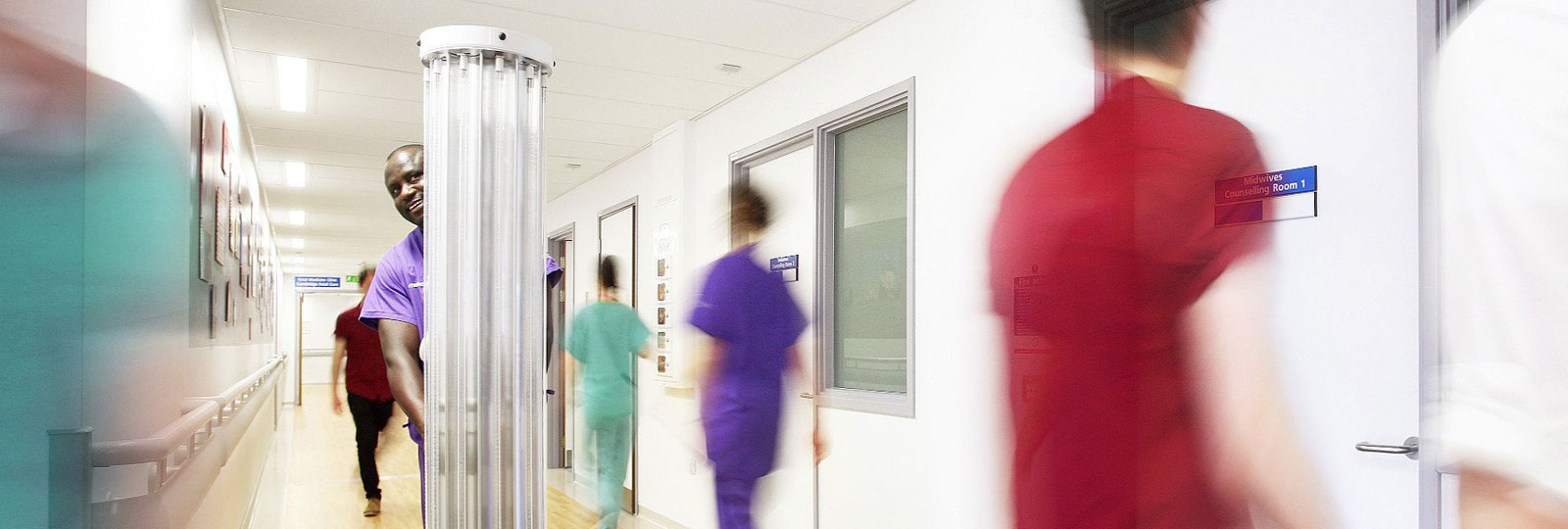
Regular manual cleaning is a first step in removing microorganisms that cause the spread of infection.
But manual cleaning alone is not always sufficient to kill pathogens. Evidence shows that manual cleaning efforts are often insufficient, leaving microbial contamination present on surfaces.
In the last decade, there has been a huge increase in the use of automated decontamination systems within healthcare environments.
These systems take two main forms – hydrogen peroxide vapour devices (HPV) and ultraviolet-C (UVC).
So what are the benefits of these automated decontamination systems?
1. Effectiveness
Automatic decontamination systems can be more time-consuming to implement than manual cleaning.
However, they also provide the reassurance of removing over 90% of pathogens from the environment and minimising the risk of user error.
2. Speed
UV-C decontamination can reduce pathogens within 15-30 minutes, depending on the size of the room. This makes it very effective for wards where there is a high volume of patients, such as as ICU, ED and MAU wards.
HPV decontamination takes slightly longer, but can still be completed in under 2 hours.
3. Ease of use
As with any vital procedure carried out in a hospital environment, training and assessment in the use of automated decontamination equipment will be required for hospital cleaning staff.
But automated systems are designed for ease of use which ensures operation is simple once initial training has been provided.
Additional supplier services, such as regular site visits, routine maintenance and 24-hour on-call support, can also be invaluable in ensuring equipment is being used correctly and with maximum efficiency.
4. Safety
HPV and UV-C decontamination systems present zero health risk to cleaning staff, as personnel are not present in the room when decontamination is taking place.
The use of a lockable “doorbar” device can also ensure that the room remains secure throughout cleaning.
Of course, hydrogen peroxide can be hazardous to humans, but HPV systems will automatically adjust every decontamination process for the specific environment, and hydrogen peroxide is rapidly deactivated at the end of the process.
No operator programming is required, eliminating the risk of human error.
5. Reduced waste
Automated decontamination requires minimal to zero water consumption.
There is also less risk of spillage of waste materials that could further contaminate the environment.
6. Consistency
During manual cleaning, errors can occur in the selection and preparation of the right concentration of disinfectants.
In contrast, HPV or UV-C systems automatically deliver the correct level of decontamination.
7. Accuracy
Automated devices work for the required period of time to effectively decontaminate the environment.
Unlike manual cleaning, where the contact time between disinfectant and the contaminated surface during manual cleaning is not always accurately performed.
8. Improved patient flow
Research has shown HPV decontamination technology to be effective in improving patient outcomes and reducing operational costs.
One NHS Trust reported a reduction in HAI cases from 20 reported incidents to seven over a ten-month period.
Summary
Choosing the right decontamination strategy to prevent and control HAIs within a healthcare setting is an ongoing challenge for hospital trusts.
There are constant pressures to improve cleaning compliance and quality, whilst ensuring minimal disruption to patients and staying within tight budgetary constraints.
However with the right combination of resources, equipment and support, it is possible to improve the patient experience, reduce waiting times and create a safer environment for hospital patients, visitors and staff.





